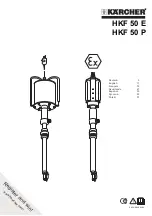
Filter Change Sheet and Normal Operation
Note: Filters are referenced in the order in which they appear in the system
1.
Sediment Filter:
This filter is the first stage in the R/O process. The sediment filter effectively
removes particles and sediments. An example of a particle that would be removed is sand. The
sediment
filter’s life depends on the amount of total particles in your water supply. The best way to
determine when to replace this filter is from a PSI pressure drop. When you see a 5 PSI drop on
your unit, you should change the sediment filter. Discoloration is also a sign that the filter is loaded
with contaminants and should be replaced with a new sediment filter.
2.
Carbon Block, GAC or Chloramine Blaster Filter
: These filters effectively reduce
VOC’s
(Volatile Organic Compounds) in RO water systems. The federal Safe Water Drinking Standard
mandates that if you have contaminated drinking water, you need to treat it accordingly. The most
cost effective way to predict carbon filter life is by measuring the output in gallons. The carbon
block will filter 3,750 gal @ 1.0 GPM of 2ppm Chlorine (Cl
2
). A GAC will yield 5000 gallons of
treated water@ 1.0 GPM of 2ppm Chlorine (Cl
2
) . The Chloramine Blasters are run 2 in series
and will yield approximately 8000 gallons of treated water.
(
Do not exclude drain water from this capacity, as it is treated water
.)
3.
Reverse Osmosis Membrane
: This is the first component in the system that reduces Total
Dissolved Solids (TDS); a common example of dissolved solids can be salts or calcium. A TDS
meter is the best way to determine if your membrane is operating properly. A properly operating
membrane will give you a TDS reduction of at least 90%. EXAMPLE: Raw water TDS is 100ppm,
after the membrane it should be 10ppm or less. Membranes can fail due to Clogging or Scaling, in
this situation very little or no purified water will be produced
from the RO’s blue line. Membranes
can also fail from contact with chlorine. So changing the carbon filter on time is essential. Hot
water will also ruin a membrane (>80 Deg. F). If your membrane produces significantly more water
than its specified rating, something is wrong.
Limited
Three Year Warranty
Hydrofarm, Inc. warrants the product to the original owner to be free of defects in material and workmanship for a period
of three years from the date of receipt. This warranty covers filter cartridge housings, fittings and tubing and all
components. Filter replacements including sediment cartridges, carbon block cartridges, reverse osmosis membranes are
the responsibility of the consumer.






















